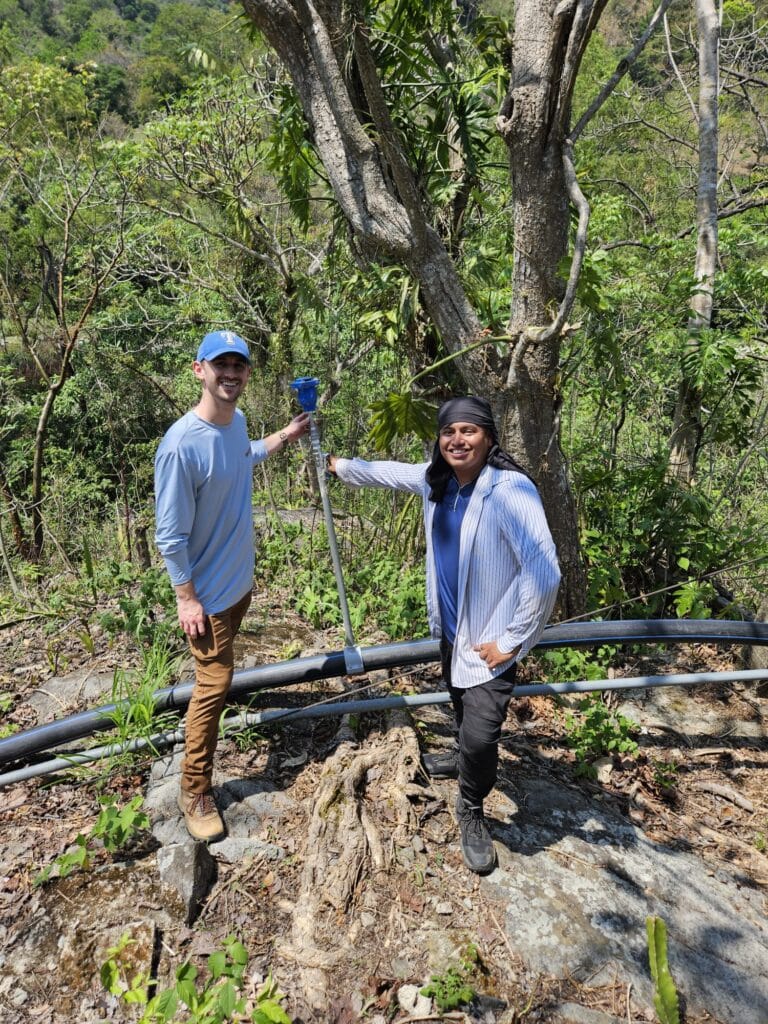What happens when an engineer trades his desk for the rugged terrain of a field project in Mexico? A lot of problem-solving, a few surprises, and a deeper appreciation for the impact of clean water.
Joey, an engineering consultant from the U.S., recently joined Walter, the Lead Engineer of Healing Waters, on a trip to Rosalbali, Mexico, to assess and improve the water system serving three communities. With a background in engineering and a passion for water solutions, Joey was eager to get his hands dirty.
Sunrise to Sunset: The Reality of Field Work
From the moment they arrived, it was clear this was no ordinary engineering job. Days started at sunrise and stretched long into the evening. Joey expected technical work, but what he didn’t anticipate was how many hats Walter had to wear—troubleshooter, trainer, project manager, and technician all rolled into one.
“He’s responsible for so much,” Joey said, impressed by Walter’s ability to manage every aspect of the project remotely from the U.S. while still being deeply hands-on in the field.
The trip was packed with problem-solving. A pump wasn’t operating efficiently—why? Was the sizing off? Was something affecting the flow? With Joey’s expertise in pump testing and transmission systems, he jumped in to assess the situation, checking pipelines and evaluating where adjustments (and maybe a few extra valves) could make a big difference.
The Balancing Act of Technology and Accessibility
One of the biggest challenges in humanitarian engineering is balancing cutting-edge solutions with real-world usability. Joey saw this firsthand during the technician training on day two.
“The goal isn’t just to build something technically sound,” he reflected. “It has to be accessible to the people maintaining it. If a system is too complex, it won’t be sustainable.”
The Healing Waters team struck that balance—ensuring the system was advanced enough to be effective but operations are simple enough for local technicians from the community to manage. And the local technicians were eager to learn, firing off questions and absorbing every detail of how the system worked.

Beyond Engineering: The Heart of the Community
Of course, a trip like this isn’t just about pipes and pumps—it’s about people. One of the most rewarding parts of the experience was the chance to share meals with local families who are directly impacted by these projects. Healing Waters often engages the local community by providing funding for locals to host meals at their homes.
“You can’t pay for this kind of experience,” Joey said. “The food was amazing, but more than that, it was a way to connect with the people this project is for.”
Spending time with community members, including Sebastian—Healing Waters’ Regional Director Americas who shared his own experiences—added depth to the trip. Clean water is more than an engineering challenge; it’s a life-changing resource, and being on the ground made that clearer than ever.
A Trip to Remember—And a Commitment to Continue
For Joey, the trip was more than a one-time adventure. It reinforced why he became an engineer in the first place. Seeing the impact of clean water projects up close, solving real-world problems, and working alongside dedicated individuals left him inspired to keep contributing.
“This is exactly why I became an engineer,” he said. “I want to keep doing this.”
From troubleshooting pumps to sharing meals with families, Joey’s time in Rosalbali was a reminder that engineering isn’t just about numbers and calculations—it’s about people, persistence, and making a tangible difference.
And as he heads back to his day job, one thing is certain: this won’t be his last trip.
